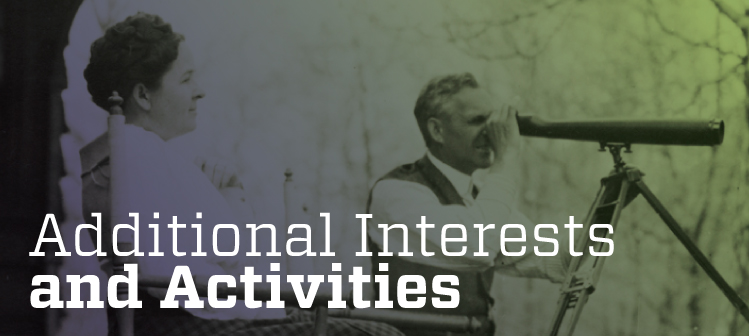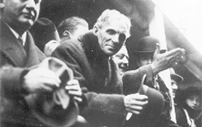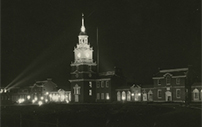 |

![]()
Ford’s success and growing fame caused him to look for new challenges beyond the auto industry. Disgusted by the carnage of the World War in Europe, Ford chartered a “Peace Ship” in 1915 and sailed across the Atlantic to stop the war. It was a well-intentioned yet foolish effort that was doomed to fail. Three years later, at the urging of President Wilson, Ford ran for the US Senate, losing in a close election.
Henry Ford made major contributions to the aviation industry. The all-metal Ford Trimotor flew for airlines around the globe. Dearborn’s Ford Airport was among the best in the world when it opened in 1925, and the nearby Dearborn Inn was one of the country’s first airport hotels. Ford’s advancements in radio navigation made flying safer for everyone. Though important, his aviation ventures were not profitable and Ford ended them in 1932. The Great Depression forced him to focus on his core automobile business, and airplane technology was changing too rapidly for his assembly-line techniques.
As early as 1912, Henry Ford was collecting “relics” such as wagons and threshing machines that represented American industrial progress as well as objects that reflected a world that was vanishing with every Model T that rolled off the assembly line. These collections were eventually showcased in a museum complex with the purpose of educating America’s youth. Greenfield Village opened as a campus for the private Edison Institute Schools in September 1929.
As the 1930s wore on Henry Ford devoted more and more time to his growing museum, the Edison Institute (now known simply as The Henry Ford), where he assembled one of the great collections of significant buildings and artifacts from American history.
 |
Henry Ford Aboard the Peace |
 |
Nighttime Lighting Rehearsal at |
Copyright © 2013 20900 Oakwood Blvd., Dearborn, MI Call Center: 313.982.6001 or 800.835.5237 |